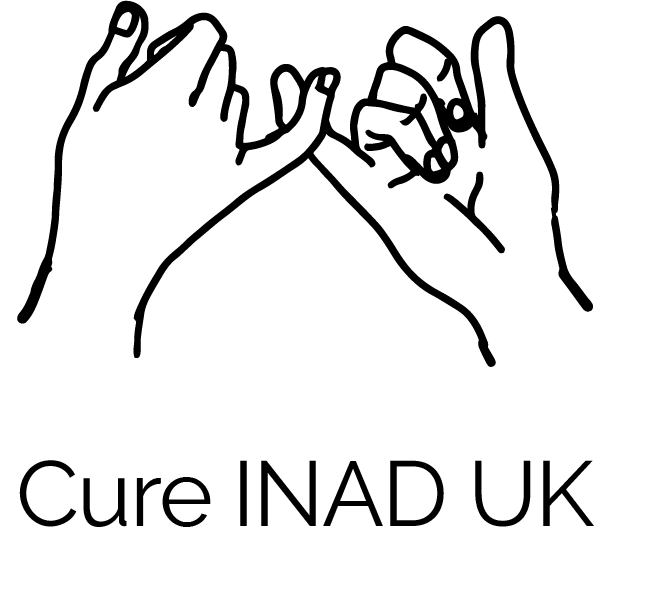
Infantile Neuroaxonal Dystrophy
Information provided by Great Ormond Street Hospital
What is INAD?
It is a rare inherited disorder affecting the nerve axons (which are responsible for conducting messages) in the brain and other parts of the body, causing a progressive loss of vision and of physical and mental skills.
What is the cause?
INAD is caused by an abnormal build-up of substances in the nerves throughout the brain and body, which prevents them working properly. These deposits (sometimes called spheroid bodies, because of their appearance under the microscope) are found particularly in the nerve endings going to muscles, skin and conjunctiva (around the eyes).
It is not certain how or why these deposits build up on the nerves, but it is likely that the normal process whereby the body clears unwanted chemicals is not working properly, due to the gene responsible for this action being faulty.
How does it progress?
The infant’s development starts to slow down between the ages of six months and two years. Over the following years they will lose skills previously learned and vision will become increasingly impaired and, eventually, lost. Nystagmus (rapid, wobbly eye movements) and squints may be the first signs of this.
They will become hypotonic (floppy), especially in the legs and body (more so than in the arms). Over the course of several years, the child becomes as dependent as a newborn baby again, often physically very stiff (spastic) and eventually loses all understanding or real awareness of their surroundings.
The condition is not a painful one and the child will be unaware of what is happening in the later stages of the disease. The brain’s control of the muscles responsible for chewing, coughing and swallowing eventually become affected, so that assistance with a feeding tube may be needed, and chestiness will develop and may lead to infections and increasing physical weakness.
Eventually the combination of the diseased brain and physical weakness becomes too great to sustain life, and death usually occurs between the ages of five to ten years. Parents and carers will be aware of the child’s increasing frailty, and death is usually relatively peaceful and expected when the time comes.
OUR MISSION
To provide grants to promote medical research into INAD, the results will be published, with the aim of finding a cure and medication to improve prognosis.
Why fund research into rare diseases? Many rare diseases disproportionately affect children, are often life-limiting and most are genetic in nature. Single gene diseases like INAD are good research models for understanding underlying normal and disease biological processes, and can be conduits to scientific breakthroughs and advancing treatments for commoner diseases in the wider population.

